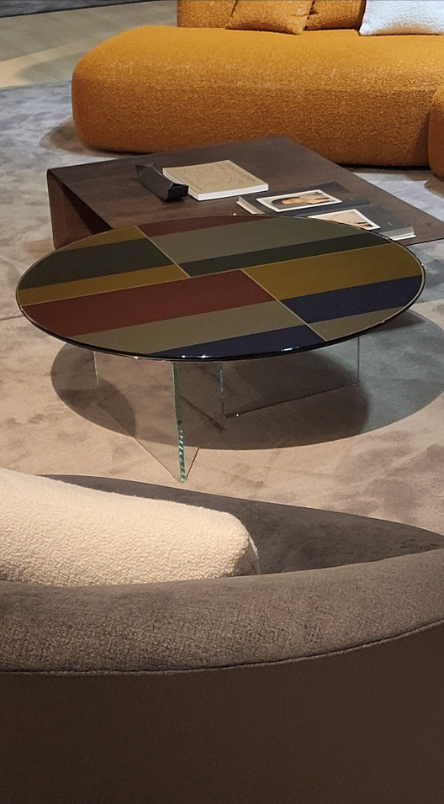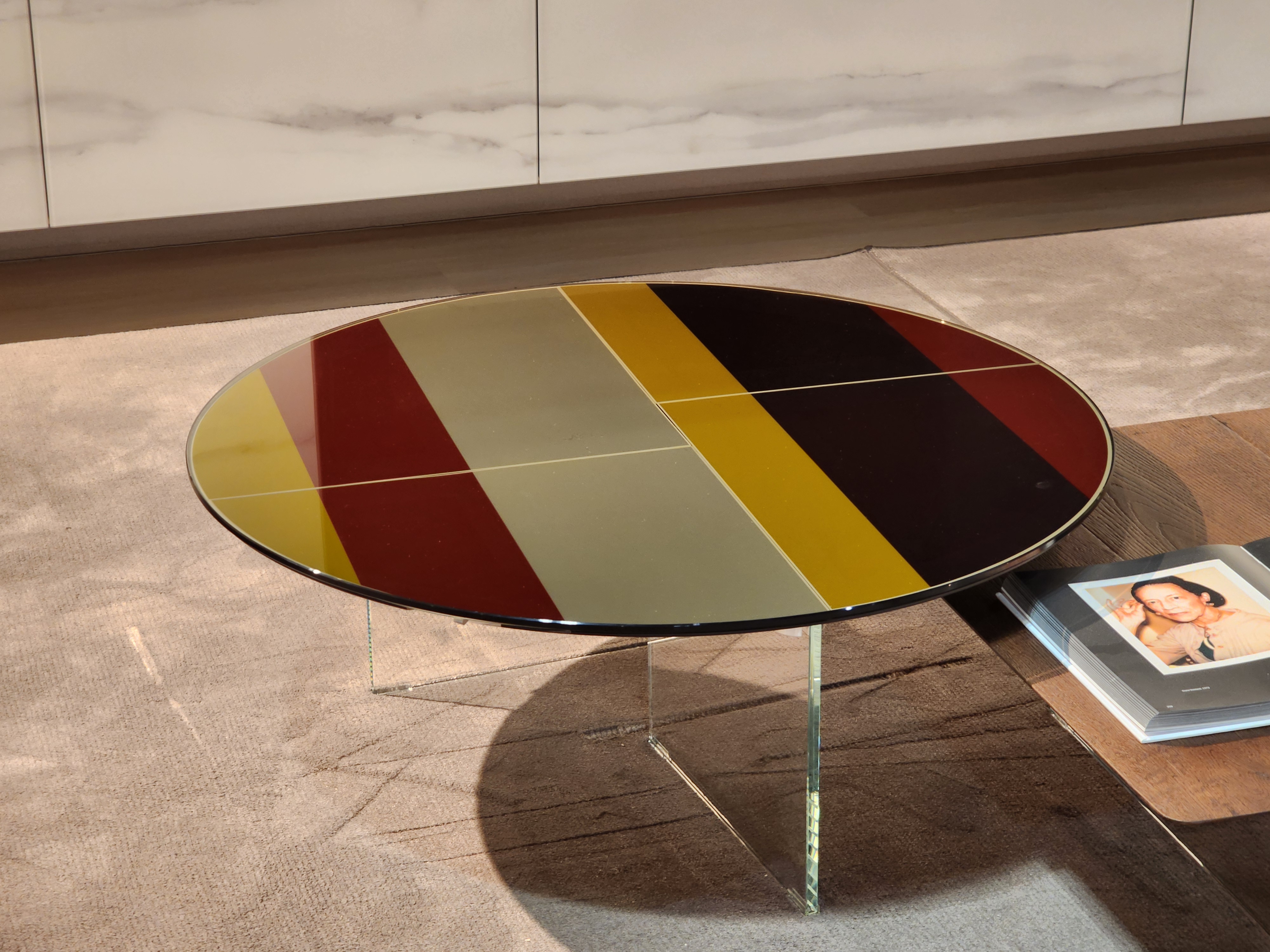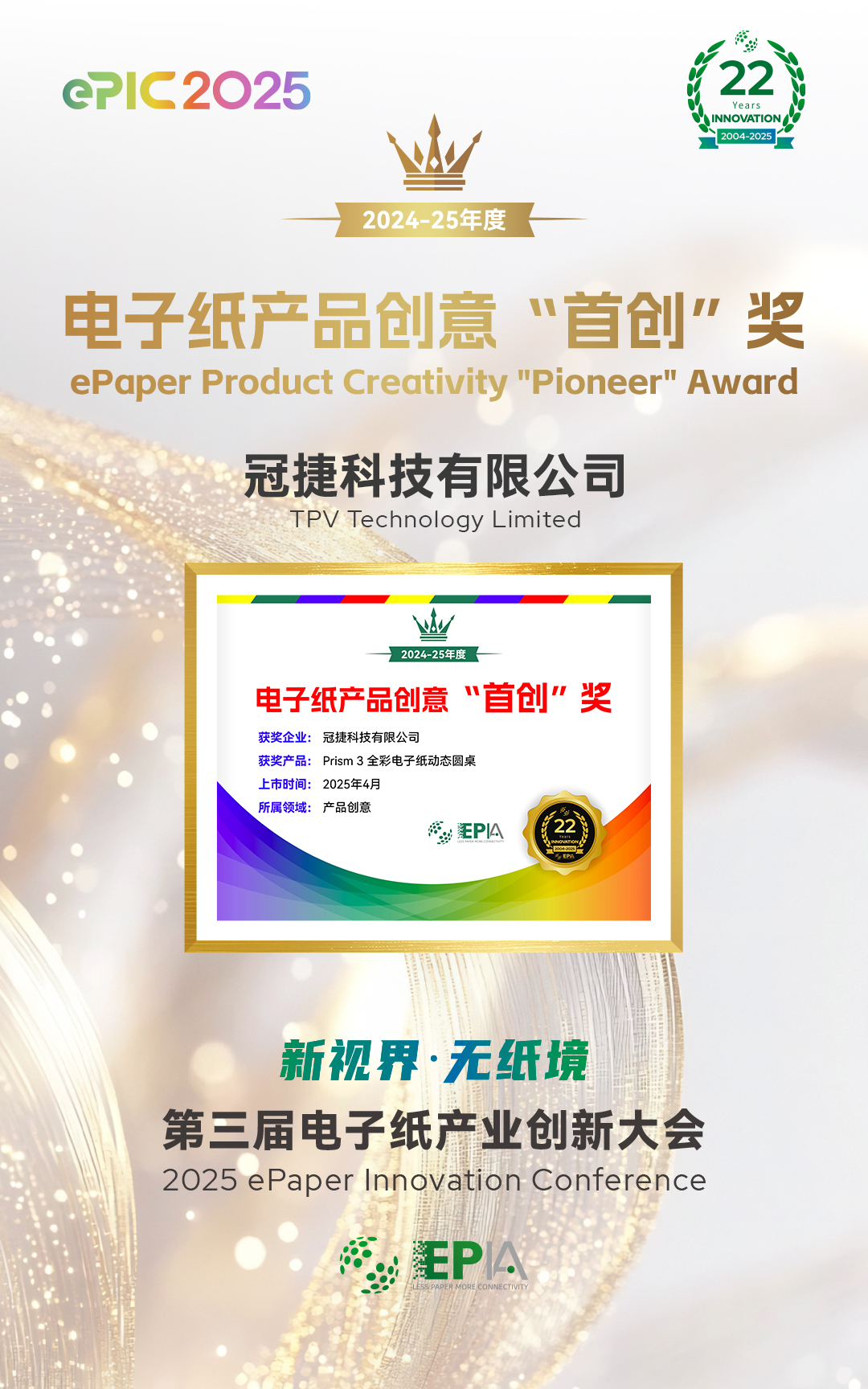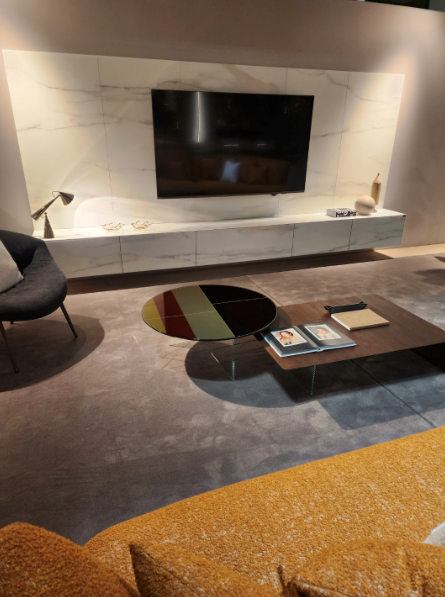



## I. Introduction: When Italian Design Philosophy Meets ePaper Technology
In an era where digitalization and sustainable development go hand in hand, TPV has joined forces with Italy’s top furniture brand LAGO to create the "Prism 3 Dynamic Design Round Table," marking the first integration of E Ink Prism 3 color-changing ePaper technology into the high-end furniture sector. This 90cm-diameter living room round table redefines the expression of "surface design" in time and space through digitally reconstructed wood textures and dynamic colors—not only inheriting LAGO’s signature minimalist and timeless aesthetics but also endowing furniture surfaces with the intelligent ability to instantly perceive the environment and respond to user needs.
Breaking the static limitations of traditional furniture, this product combines the color-changing properties of ePaper with six-color dynamic combination capabilities. While achieving ultra-low power consumption, it perfectly aligns with the global pursuit of sustainable smart homes under the trend of carbon neutrality.
## II. Innovation Narrative: From Material Revolution to Spatial Dialogue
### Inspiration Origin: A Design Experiment on Deconstruction and Reconstruction
During Milan Design Week 2024, LAGO’s design director, observing the light and shadow changes of Prism 3 color-changing ePaper, posed a thought-provoking question: "What if wood textures could breathe freely like a digital interface?" This idea collided with TPV’s years of technical accumulation in Prism 3 color-changing ePaper, sparking a cross-disciplinary collaboration between technology and design. The two parties quickly formed an international R&D team and successfully overcame two key technical challenges within six months:
- **Curved Surface Bonding Technology**: Through laser cutting, precise bonding of Prism 3 films on a 90cm-diameter curved surface was achieved, with an error margin controlled within ±1mm.
- **Dynamic Texture Algorithm**: Combined with environmental sensing devices and exclusive driving waveforms, it drives color blocks in different areas of the Prism 3 film, presenting ever-changing design languages through combinations of six colors and rhythmic patterns. 
## III. Design Philosophy and Sustainable Value
This innovative design symbolizes a new interpretation of LAGO’s design language in the digital age:
- **Extension of Modular Thinking**: The tabletop is divided into multiple virtual wooden blocks, each independently controllable in color, forming a visual language similar to "pixelated wood grain." This not only continues LAGO’s consistent modular design logic but also pushes it to the forefront of digital dynamic materials, achieving deep integration of design and technology.
- **Technological Interpretation of Timelessness**: Dynamic color changes effectively alleviate visual fatigue. Compared with traditional single-color furniture, dynamic colors can prolong users’ sense of freshness toward objects, reinterpreting the design concept of "lasting freshness" and creating continuous sensory surprises and emotional connections in daily use.
- **Digital Language of Spatial Interaction**: The tabletop is no longer just a static decoration but a "interactive interface" with perception capabilities. Colors can change in real time according to light, temperature, and user behavior, transforming furniture from a static object into an active narrator of space, enabling deeper dialogue with people, space, and time, and infusing smart homes with emotion and soul.

## IV. Application Scenarios and Market Value
First, the product enables space-empowering applications:
- **High-end residential spaces**: By linking with indoor lighting systems, the tabletop color can automatically change with the day-night rhythm, creating an immersive "dawn-dusk gradient" living scene and enhancing living quality and spatial perception.
- **Art and commercial spaces**: As an interactive display platform, the tabletop can instantly present audience behavior or environmental sensing data, suitable for galleries, brand stores, or digital art exhibitions, enhancing participatory experiences.
- **Smart hotels and conference venues**: It can serve as an interactive control interface in rooms or public spaces, supporting touch color adjustment, hidden buttons, and mode switching, improving technological experience while maintaining aesthetic consistency.
Meanwhile, the product holds industrial innovation significance:
- **Verifying the practical feasibility of ePaper furniture**: This project marks the first successful application of ePaper technology on large furniture surfaces, proving its comprehensive performance in aesthetics, durability, and energy efficiency has market potential.
- **Defining a new paradigm of "Calm Technology" in home design**: Focusing on technology invisibility and emotionalized experience, it achieves low-interference, high-perception smart interaction, reshaping the technological interface of future living spaces.
- **Creating a standardized interface for integrating architecture and furniture**: It provides scalable modular dynamic surface technology, bringing new possibilities for space design and system integration. Multiple technical patents have been applied for, with potential for mass production and application replication.
## V. Future Evolution Plans
In terms of technological iteration and upgrading, a self-powered version integrating indoor photovoltaic cells and energy-harvesting modules is expected to be launched in 2026. It will achieve true off-grid operation through ambient light charging, further reducing energy dependence and moving toward a higher level of sustainable smart homes.
In terms of ecosystem expansion, an open designer platform will be built, providing SDK toolkits and development resources, allowing users or designers to create and upload their own patterns and dynamic effects, shaping personalized or brand-specific dynamic aesthetics, and forming a user-centric creative ecosystem.

## VI. Conclusion: Redefining the Possibilities of Surfaces
As a new generation of smart materials, Prism 3 color-changing ePaper not only boasts technical advantages such as ultra-low power consumption and backlight-free visibility but also opens unprecedented innovative dimensions in design language. It combines the natural color perception of printed paper with the flexibility of digital displays, infusing furniture surfaces with dynamic vitality.
In this design, materials are no longer just passive carriers but intelligent elements that can actively participate in creating spatial atmospheres. As colors and rhythms change, the mood of the space and the user’s perception are gently guided, achieving a balanced integration of technology and sensibility.
This round table is not just a platform for showcasing technology but also a revolution in design thinking. It proves that ePaper is not just a "screen" but can become a design material deeply integrated into the fabric of life. When the warmth of technology meets the depth of Italian craftsmanship, a work that combines poetry and rationality emerges.
In this project, TPV applied Prism 3 technology to the high-end furniture field for the first time, achieving high-precision bonding of films on curved surfaces through exclusive lamination and laser cutting processes. The material itself can maintain display without backlight or continuous power supply, significantly reducing energy consumption and responding to contemporary dual demands for aesthetics and environmental responsibility.
In the future, we look forward to working with global designers, innovators, and space creators through the EPIA open platform to explore more possibilities of ePaper in spatial aesthetics, continuously expanding the meaning and imaginative boundaries of "surfaces."